For many people aspiring to write a book, their dream is that one of the big five publishers will pay them to publish their book. They imagine a book tour and publicity, and people lauding the most incredible story of time. I’ve got news for you—that’s a fairy tale that hasn’t been true in decades. Yet people keep thinking that’s the best publishing option. It’s not.
Here are our 7 reasons at NOW Publishing to NOT publish with a traditional publisher:
1. COMPETITION: The number of titles released by traditional houses is shrinking by the day. The fiction market has been tightening since the birth of self-publishing and traditional publishers are struggling to compete. This makes it even more a competitive space to publish in.
2. GATEKEEPERS: Traditional houses require authors to have an agent in order to submit manuscripts to them. Getting an agent is just as hard, if not harder, than finding a publisher. Because agents work on commission, they want to take on sure winners (authors).
3. CONTROL: Unless you are a big-name author, traditional publishers give their authors very little control (if any) over cover design, marketing, promotion, distribution, and sometimes even content.
4. DISCOVERABILITY: Traditional publishing houses struggle with digital marketing, to compete with self-published and hybrid-published authors who make it a full-time job to understand Amazon algorithms, and rankings, and advertising. Don’t expect much in the digital marketing promotion space.
5. AVAILABILITY: Brick and mortar bookstores have closed left and right and given our current pandemic their retail fate is perilous. Walmart has dramatically cut its book section and people are buying more from online etailers. If you look at the track record of traditional publishers with online marketing, discoverability becomes a big issue.
6. INVESTMENT $: Traditional publishing focuses its marketing dollars on the sure things—the Stephen Kings and James Pattersons of the world. It costs a publisher money to have a book placed on a table in Barnes and Noble. They pay more money to have a book turned face-out instead of spine-out. They pay for premium space in Walmart and Target, as well as on Amazon’s page. Traditional publishers are struggling and they want to have a guaranteed return on their big investment in an author and his book.
7. MONEY: Traditional publishing takes forever to pay royalties. In the old days, publishers paid authors an advance against their royalties, which used to be five figures, but is now down to $1000 for most authors (if they offer any advance at all). The author wrote the book and it was in bookstores about a year later. Traditional publishing is a commission business, which means publishers hold back a percentage of the royalty check as a reserve against returns. That percentage can be as high as 80%. That’s assuming you’ve even sold enough books to earn back your advance.
Authors who work with a hybrid publisher have control, digital reach, quality, and immediate payments. They can pivot faster to answer changes and demands in the marketplace. Traditional publishing used to be the holy grail for authors, but in an increasingly digital and self-controlled world, it’s fast becoming the next dinosaur.

